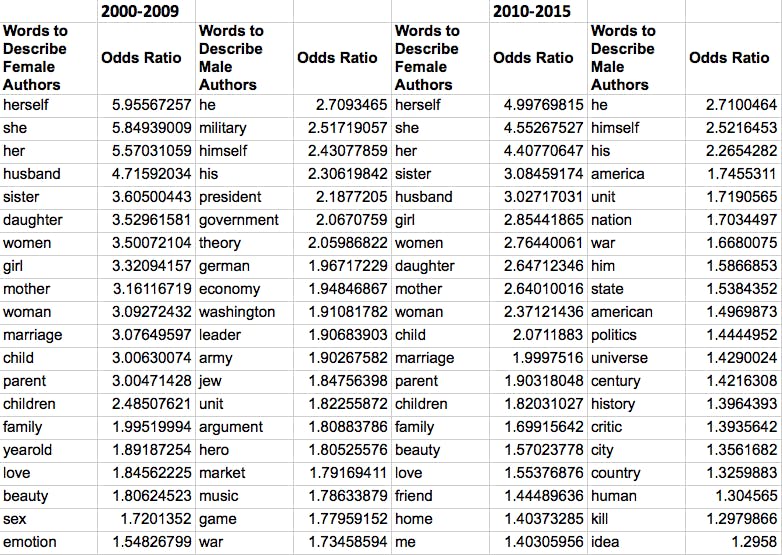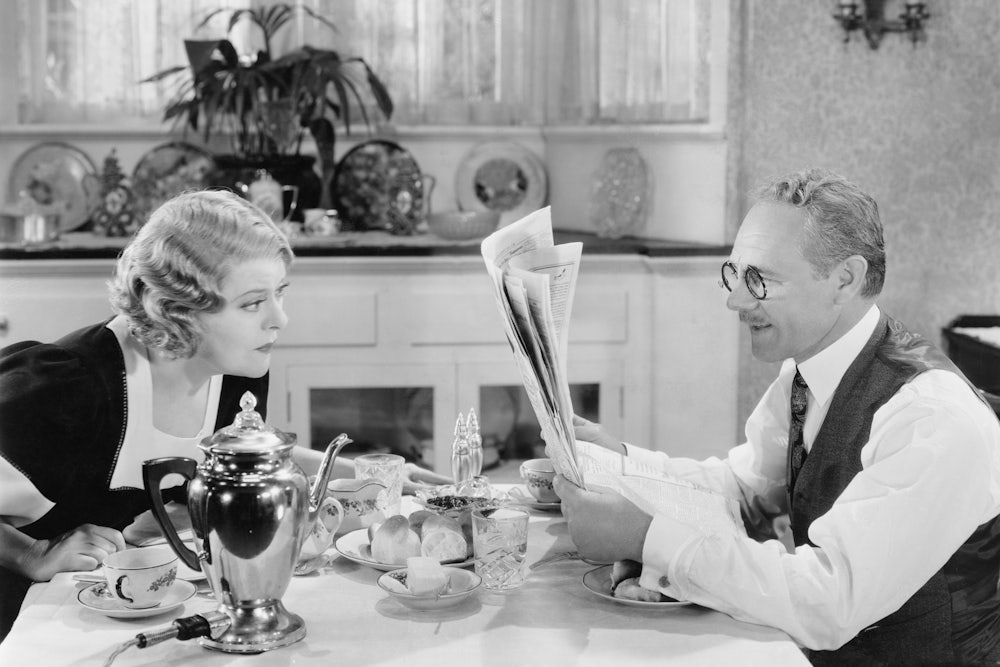Stereotypes about women writers are as old as books written by women. Many female authors—Jane Austen and the Brontë sisters among them—rose to prominence in the mid-nineteenth century, a period the literary scholar Elaine Showalter calls “The Age of the Female Novelist.” But this age also witnessed the development of narrow ideas about women writers and how and what topics they should write about. In 1904, G.H. Lewes identified “sentiment” as a consistent “feminine literary trait”; George Eliot, herself a woman, believed that “maternal affections” distinguished books written by women.
Despite a century’s worth of women’s rights movements since then, male (and sometimes female) writers still talk about female authors through the lens of “The Lady Writer.” In 1965, Bernard Bergonzi explained that “women novelists … like to keep their focus narrow” on domestic topics, while more recently, V.S. Naipaul declared no living or dead female author could be his equal because they are bogged down by their limited, “sentimental sense of the world.” Gay Talese claims that not a single female writer has influenced his work. This has been the unyielding consensus since the 1880s: Women writers are excessively emotional and can only write about things like family or feelings.
Since the early 2000s, gender inequality in the culture industry—literature, music, and film—has become the site of increasing protest. Calls for more and better roles for women in mainstream movies have become commonplace in the last five years. In the world of writing, gender bias has come to be seen as particularly entrenched, and in 2009, VIDA—a group of volunteers interested in drawing attention to gender inequality in the field of book reviewing—began what they called “the count.” The results of their study proved withering from the start. Men appeared 66 percent more often in The New York Times Book Review. Three times more often in the London Review of Books. Other magazines, such as The Times Literary Supplement, had even worse numbers. These numbers are valuable because they can track how often publications deign to review books by women, but what they can’t track is how reviewers then treat women’s work: how they write about women and the stereotypes they invoke.
This is where our project began. We decided to analyze the contents of recent book reviews to see if men and women were written about differently when their books were under review. And we wanted to see if anything had changed over the last 15 years. We chose to focus on The New York Times for two reasons. First, The New York Times Book Review is widely seen as a powerful gatekeeper; a good or bad review can determine a book’s overall reception, and thus, if there are changing trends in the book-reviewing world, we would find it there. Second, The New York Times has been directly responsive to the VIDA study in acknowledging gender imbalance in its pages and seeking to address this problem. The improving numbers at The New York Times are often pointed to as evidence that things are getting better.
We examined a collection of 10,287 reviews from the Sunday Book Review of The New York Times published since 2000. We labeled the genders of the reviewer and the author under review and then ran tests to identify language in the reviews that was indicative of the different genders. The tests return a series of “most distinctive words”: these are the individual words that distinguish one group from the other. In our case, this means the words that differentiate book reviews of male authors versus female ones. The test also provides an “odds ratio” score. This score indicates how distinctive a word is for a group of texts—that is, how much more likely that word is to appear in one group versus another. So for example, if you see the number “3” in the odds-ratio column next to a word used to describe a female author, that means that the word is three times more likely to appear in a book review written about a female author than about a male author. Below, we produce a chart that shows the most distinctive words used by reviewers to describe books written by men versus women for the years between 2000 and 2009 and the years between 2010 and 2015.

As you can see, the results are jarring. Book reviewers are three or four times more likely to use words like “husband,” “marriage,” and “mother” to describe books written by women between 2000 and 2009, and nearly twice as likely to use words like “love,” “beauty,” and “sex.” Conversely, reviewers are twice as likely to use words like “president” and “leader,” as well as “argument” and “theory,” to describe books written by men. The results are almost too good in their confirmation of gender stereotypes. New York Times book reviews overwhelmingly suggest that women tend to write about domestic issues and affairs of the heart, while men thrive in writing about “serious” issues such as politics. It’s not that women don’t write about politics or men don’t write about feelings and families. It’s just that there is a very strong likelihood that if you open the pages of the Sunday Book Review, you will be jettisoned back into a linguistic world that more nearly resembles our Victorian ancestors.
Perhaps, cynically, we might say these results are hardly surprising. Yes, the presence of stereotypes of women writers in book reviews is sad but largely predictable. But what is particularly startling about our results is their chronological stability: If you look at the results for the period between 2010 and 2016, the distinctive words are nearly identical. Men still write about politics and have “ideas.” Women still write about “family” and obsess over love or themselves (“me”). These results directly contradict current claims around gender inequality in book publishing; things are bad but they are getting better. Once VIDA began to release its findings in 2010, several periodicals, including The New York Times, directly responded by making a concerted effort to review more books by women and employ more women reviewers. In 2014, VIDA reported that The New York Times was down to a 14 percent bias towards men, and interpreted that quantitative shift as a sign of improvement. Better gender representation indexes less gender discrimination. Things have been very bad but they are gradually getting better.
But things are, in many significant ways, not getting better at all. A better numerical representation of women in the pages of The New York Times has not done much to alter how women writers are being talked about in the press. These forms of speech are proving deeply intractable. The discourse around gender we find in the last five years in the Times has essentially reproduced the public/private split bequeathed to us from the nineteenth century: Women writers are still being defined by their “sentimental” traits and a love of writing about “maternal” issues, while men are most often being defined by their attention to matters of science and the state.
Ultimately, what’s at stake in these findings is not simply the question of how to reduce gender inequality in the world of letters, but also how we imagine and recognize such change. Quantitative changes in gender representation are not trivial and they provide an instantly discernible sense of improvement: This year, more books by women were reviewed in the Times. Yet, they also potentially disguise the real site of struggle: our latent, subtle, and perhaps unconscious attitudes about the idea of women writing books. VIDA and The New York Times have done a great service in pursuing better gender representation. But gender representation does not necessarily equal less gender discrimination. The pattern is bigger than a head count—it’s also about the patterns of ideas and words, which have proven far more enduring and unchanging than we previously would have thought.
